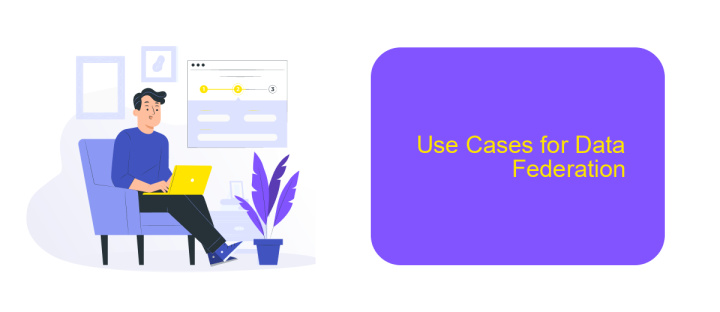What is Data Federation in ETL
Data federation in ETL (Extract, Transform, Load) refers to the process of integrating data from multiple sources into a unified view without physically moving the data. This approach allows organizations to access and analyze disparate data sets in real-time, enhancing decision-making and operational efficiency. By leveraging data federation, businesses can streamline their data management processes and gain deeper insights from their diverse data sources.
What is Data Federation?
Data federation is a method used to integrate data from multiple sources into a single, unified view without physically moving the data. This approach allows organizations to access and query data in real-time, providing a cohesive dataset for analysis and reporting. By federating data, businesses can maintain the integrity and security of their original data sources while still gaining a comprehensive understanding of their information landscape.
- Real-time data access
- Unified data view
- Maintains data integrity
- Enhanced data security
Implementing data federation can be complex, but services like ApiX-Drive simplify the process by offering seamless integration solutions. ApiX-Drive connects various data sources and automates data synchronization, ensuring that your federated data is always up-to-date and accurate. This service not only reduces the time and effort required for data integration but also enhances the reliability of your data federation strategy.
Benefits of Data Federation

Data federation in ETL offers numerous benefits by enabling seamless access to disparate data sources without the need for extensive data movement. This approach allows organizations to integrate and analyze data from various databases, cloud services, and applications in real-time, ensuring timely and accurate insights. By reducing the complexity of data integration, data federation minimizes the risk of data inconsistencies and errors, leading to more reliable decision-making processes.
Moreover, data federation enhances operational efficiency by streamlining data access and reducing the need for redundant data storage. Tools like ApiX-Drive facilitate the setup of these integrations, allowing businesses to connect multiple data sources effortlessly. This not only saves time and resources but also ensures that data remains up-to-date and consistent across the organization. As a result, companies can achieve greater agility and responsiveness in their data management strategies, ultimately driving better business outcomes.
Challenges of Data Federation

Data federation in ETL processes presents several challenges that organizations must address to ensure seamless data integration and management. These challenges can impact the overall efficiency and reliability of data operations, making it essential to identify and mitigate them effectively.
- Data Consistency: Ensuring data consistency across multiple sources can be difficult, as different systems may have varying data formats and update frequencies.
- Performance Issues: Query performance can suffer due to the overhead of federating data from disparate sources, leading to slower response times.
- Security and Compliance: Managing access controls and ensuring compliance with regulatory requirements across different data sources can be complex.
- Data Transformation: Integrating data from various sources often requires extensive transformation, which can be resource-intensive and error-prone.
- Scalability: As data volumes grow, maintaining efficient and scalable data federation becomes increasingly challenging.
To address these challenges, organizations can leverage tools like ApiX-Drive, which facilitates seamless integration and automation of data flows between various systems. By using such services, businesses can enhance data consistency, improve performance, and ensure compliance, thereby optimizing their data federation processes.
Use Cases for Data Federation

Data federation in ETL is particularly useful in scenarios where real-time data access and integration are critical. One common use case is in business intelligence and analytics, where organizations need to access and analyze data from multiple sources without the delay of data replication.
Another significant use case is in the healthcare industry, where patient data is often scattered across various systems. Data federation allows healthcare providers to access a unified view of patient information, improving decision-making and patient care.
- Real-Time Analytics: Businesses can perform real-time analytics by federating data from various sources, ensuring timely insights.
- Cross-Platform Integration: Tools like ApiX-Drive facilitate the integration of data from different platforms, streamlining workflows.
- Regulatory Compliance: Financial institutions can meet regulatory requirements by federating data from different systems to create comprehensive reports.
Moreover, data federation is beneficial in e-commerce, where customer data from different channels needs to be unified for a seamless shopping experience. By leveraging services like ApiX-Drive, businesses can efficiently set up integrations, ensuring that data from various sources is readily accessible and up-to-date.
Conclusion
Data federation in ETL offers a robust solution for integrating disparate data sources without the need for physical consolidation. By leveraging this approach, organizations can achieve real-time access to data, streamline operations, and enhance decision-making processes. The flexibility and scalability of data federation make it an attractive option for businesses aiming to maintain agility in a rapidly changing data landscape.
Implementing data federation can be simplified with the right tools and services. For instance, ApiX-Drive provides seamless integration capabilities, allowing businesses to connect various data sources effortlessly. This not only reduces the complexity of data management but also ensures that data remains consistent and up-to-date across all platforms. In conclusion, data federation in ETL is a strategic approach that empowers organizations to harness the full potential of their data assets efficiently.
FAQ
What is Data Federation in ETL?
How does Data Federation differ from traditional ETL?
What are the benefits of Data Federation in ETL?
Can Data Federation be automated and integrated with other systems?
What are the challenges associated with Data Federation?
Apix-Drive is a simple and efficient system connector that will help you automate routine tasks and optimize business processes. You can save time and money, direct these resources to more important purposes. Test ApiX-Drive and make sure that this tool will relieve your employees and after 5 minutes of settings your business will start working faster.

